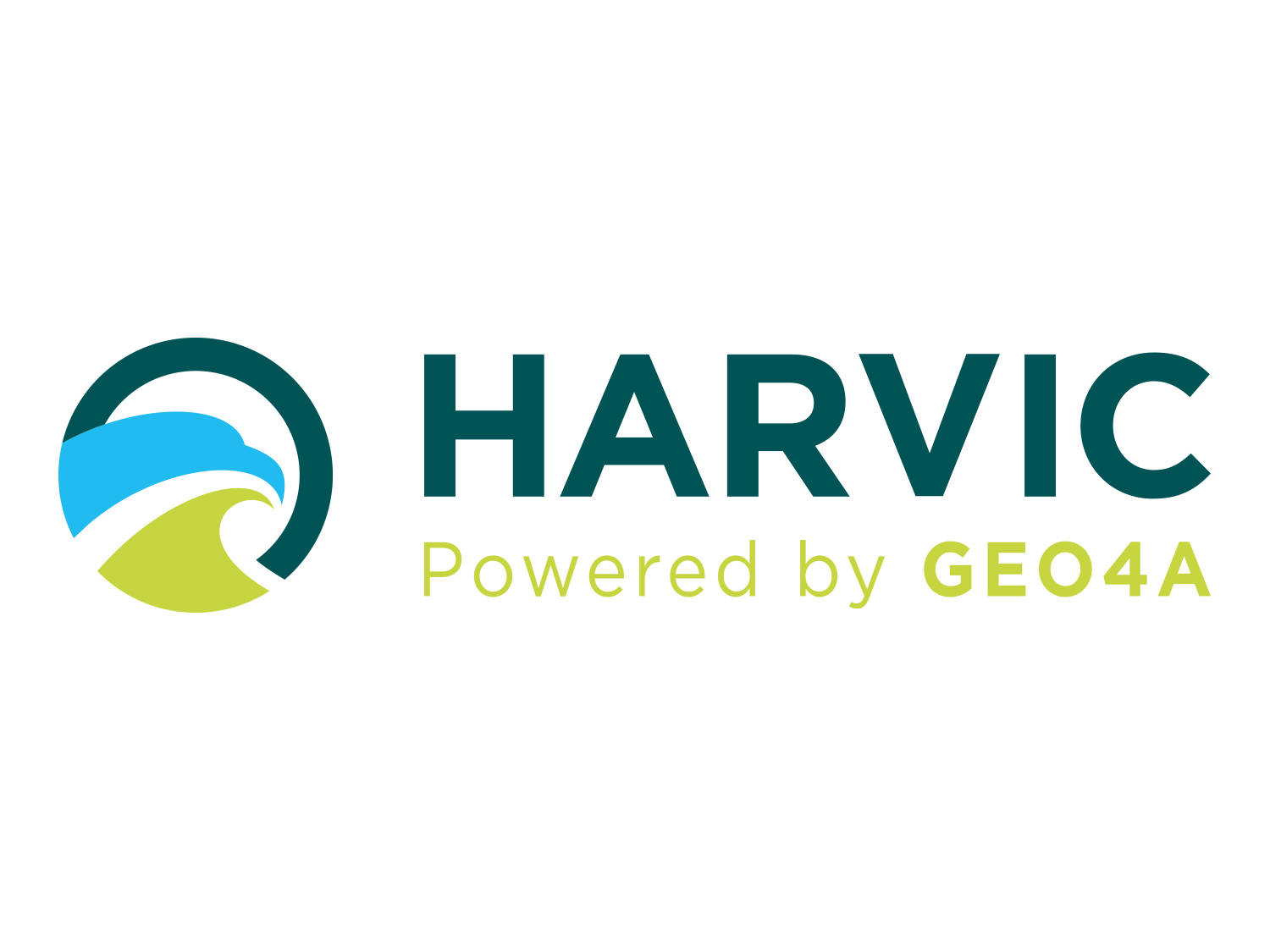HARVIC aims to provide forecast and advisory services to potato value chain actors in the Benelux through Earth observations in combination with innovative in-situ data, enabling potato companies to better manage their raw material productivity and optimize business processes and operations.
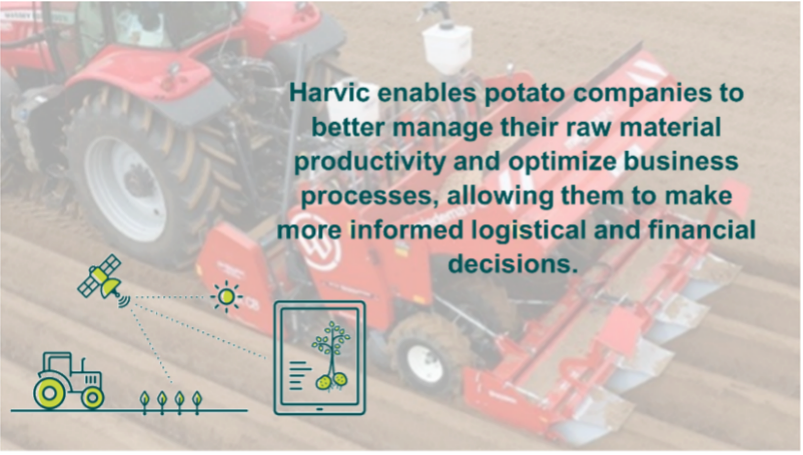
GEO4A aims to provide forecast and advisory services to potato value chain actors in the Benelux through Earth observations and in-situ data. This provides innovative real-time insights on parcels, crop vitality and vegetation growth. Detailed analysis and expert interpretation will support clients in their decision-making; maximizing and optimizing their processes, productivity and sales, but also improve the quality of their product.
The need to better manage the raw material supply chain is translated into valuable quality indicator services to provide customers insights into vegetation growth and crop quality. This will lead to the development of a product package: HARVIC Essential. The options to (automatically) integrate customer specific data, such as data from the quality-centres, into the quality service indicators is an important element in this.
Additionally, the HARVIC project assessed the technical and commercial feasibility of customized quality indicators (specifically vitality) to be added to the HARVIC product package. Such customized indicators are based on essential topics in relation to crop growth and quality, and selected by champion customers and partners.
Over the years, the Netherlands and Belgium have become world’s top producers and internationally renowned in the potato industry. Despite the leading position of the Netherlands and Belgium the potato sector is struggling with low prices, limited acreage in both countries, increasing global competition due to emerging markets such as China, and other restrictions affecting the production (processes) and yields.
Moreover, the success or failure of potato cultivation and following processing decisions and planning is determined by numerous criteria that must be considered. The highest priority is growing and harvesting the potato without damage and stress as this could significantly affect for example the quality, subsequent storage life and export, and even the net yield. Therefore, there is a strong need to better manage the raw material supply chain as to further guarantee the quality processes.

It was decided to specifically target the seed and processing segments as these two are dominant and have a leading position affecting the whole supply chain. When looking at the quality and business needs in more detail, the two segments have different needs related to vegetation growth and harvest, but the potato is a volatile product, and very sensitive to (weather) conditions. Both segments are looking for ways to minimize these earlier in the supply chain.
To fuse all available data in a meaningful way GEO4A uses a crop growth model which is based on the robust WOFOST (World Food Studies) model developed at Wageningen University. The crop growth model is a one dimensional model. The use of area covering geospatial data from satellite imagery and meteorological data allows to add a spatial component and study intra-field and inter-field variability. The model is complemented with EO data, real-time individual field and agro data. This raw input data is than translated into HARVIC quality indicators using analytics and statistical modelling. From a technological perspective, HARVIC shall enable key quality indicators to be automatically established through system transferred user data.
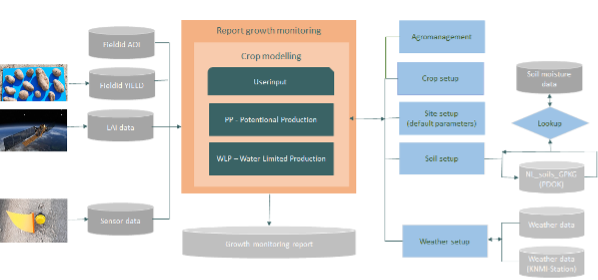
The understanding of the potato quality is key as certain circumstances during the growing season and in particular temperature-stress can affect potato tuber dry matter properties (important quality factor for processors). The technical feasibility focuses on the feasibility of a basic technical vitality indicator (VI) to a go-to-market readiness of a fully automatic customization of a calibrated potato vitality indicator. A potential new and sustainable service for the targeted customers. The collection and analysis of this data is a key activity.
A web-based platform enabling customers to track and analyse yield, projections and other quality indicators in the fields through time and space is being developed.
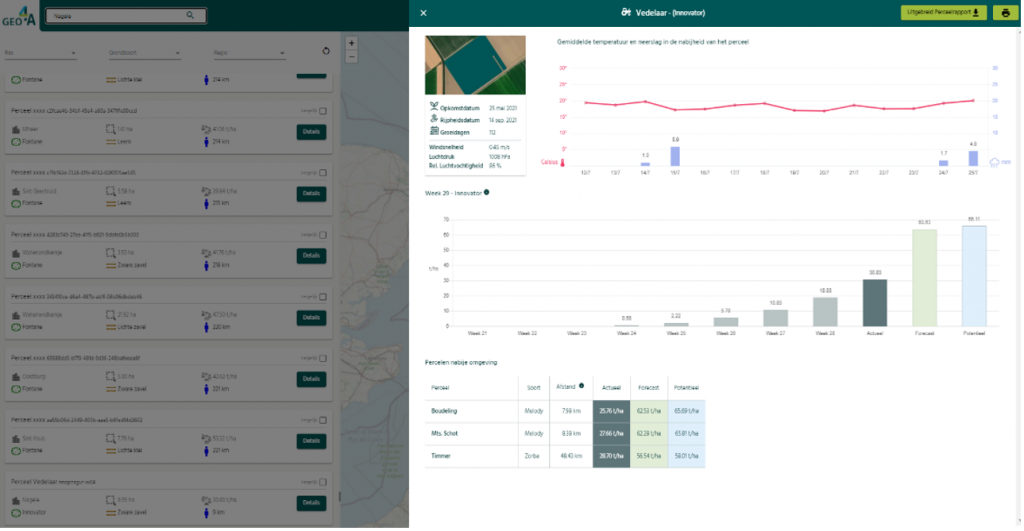
Whereas agricultural products used to be just mechanical or physical, today they are becoming more and more data-driven. Agricultural manufactures and processors are challenged to offer more and more complex services around their ‘normal’ machinery activities to compete in this ever developing environment and increasing customer demands.
Earth Observation is more important than ever—we’re having a dramatic impact on the planet, and the current COVID crisis further highlights how supply chains are increasingly globalizing and becoming more complex. Satellite and big data are very powerful means to provide additional risk information to this picture, complementing or in some cases replacing traditional risk indicators, with new, global coverage, informing on severity and extent of impacts and shocks. Facing COVID-19 further means that we are looking for new information to help with remote management and monitoring of projects, and to formulate and plan social protection and economic recovery measures for the new normality that will follow. Again, in this respect, EO can provide solutions.
The Business Case review meeting (BCR) of the Feasibility study concluded that HARVIC Essential is a viable product to go to market. Potential customers are willing to purchase solutions, given that intrinsic value for their businesses is unlocked. It is therefore vital that HARVIC can proof the impact on business processes. The remaining part of the study is focusing on preparation for further service implementation and go to market in close collaboration with interested customers.
The Feasibility study assesses the possibility of transforming customized quality indicators (e.g. vitality and maturity) into a commercial service. This could create an enormous unique selling point for HARVIC. In the study it was researched if EO could say something about vitality (correlation between temperature and sprouting), and if this could be developed into a HARVIC indicator. The results so far show the potential of using HARVIC to give insights about vitality however, a proof of concept (PoC) is still ongoing.


